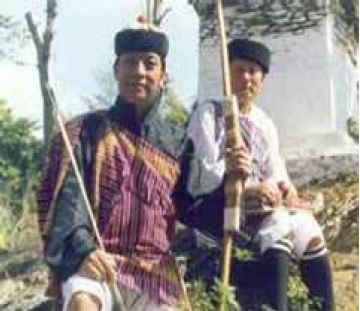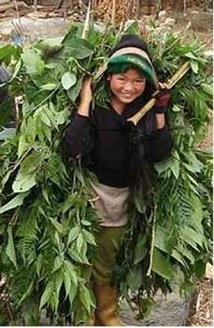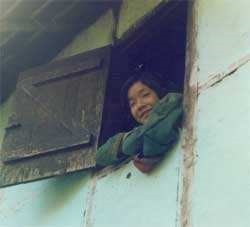Sikkim, locaion27oN 88o E, this thumb-shaped state borders Nepal in the west, China to the north and the east and Bhutan in South east. West Bengal to its South, climate ranges from subtropical to high alpine.
Literary Sikkim comes from two words ‘Su’ means ‘new’ and Khyim, means “palace” or house. Mt. Kanchenjunga lies in the border of Sikkim and Nepal. Over 600 species of orchids grow in Sikkim, 35 species of rhododendrons; oak, magnolia, maple, chestnut, Sal trees, bamboos, among the mammals are the rare snow leopard, Red panda, musk deer, blue sheep; Giant lammageier, vultures, pheasants etc.
The two main rivers are Teesta and Rangit (Origins from Rathong Glacier), whereas Teesta originates from Cholamu lake.
Since Rainfall is a common process here, most of the archeological sites must have been washed away. Nathula and Jalepa, the two very significant passes are of main concern, as these were the routes of ancient silk trade;
The majority of population comprises of Bhutias, lepchas, Nepalis, migrants from Bihar and western India, limbos, Tamangs, Rai.
Sikkim was inhabited in Pre-historic times by three tribes namely Naong, Chang and the mon. the lepcha who entered Sikkim sometimes later absorbed them completely. The origin of lepchas is shrouded in mistery but it seems that they came from south of Brahmaputra valley.
The credit of organizing them into some sort of a society goes to a person called Tur ve pa no. the Tibetans who entered Sikkim in early 17th century convert these Sikkimese “worshippers of nature” to Buddhism. They called themselves Rongs or non-pas. They now consists only 8.4% of the total population of Sikkim. Definitely the tribal is among the endangered one, lepcha language is also on the same verge of extension.
Majority of written texts in lepcha were of a Buddhist nature; besides this there are also many stories with a native lepcha character.
The process of development imposed by the colonial rulers had reduced the tribe to a state of subordination. The original inhabitants of the land were subjected to a forced homogenization that broke their tribal spirit. The emergence of the so called modernization also dislocated the people economically and socially. Major portion of my study would deal with their development, migration, the ethno archaeological evidences; the policies of government.
Bongthing, the priest and mun, known for their healing powers are very rare nowdays from birth to death, the Bongthing and the mun perform all the religious ceremonies and rituals of the lepchas. Chunak-Aakhen, an old lepcha book, mentions that a lepcha King Pohactak Pany sent his army to Takshashila to help emperor Chandra Gupta fight the Alexander. Besides being skilled hunters; they have also taken to paintings; bamboo crafts. Bamboo houses of the lepchas are of special mention for their uniqueness and earthquake resistively.
Sikkim has long been regarded as a region of great interest to the archaeologists as a corridor through which the Neolithic cell making techniques entered India from South East Asia. P.K. Mishra and his team uncovered and excavated many sites and recovered stone tool.
The traditional attire of the lepcha people, their cuisines had remained same from time immemorial, but western influence, their bend towards Christianity needs to be checked. Their festivals, daily livelihood, migration and their comparison with other tribes are to be studied.
Selected Readings:
Arora, Vibha, 2006, “The forest of symbols embodied in the Tholung sacred and scape of North Sikkim
Avery, J.; 1885, on the languages of lepchas in Sikkim.
Bhasin, M.K. Veena, Sikkim Himalayas: Ecology and Resource Development.
Biswas, P.C.; The lapchas of Sikkim.
Chattopadhyay, Tapan, 1990, lapchas and their heritage.
Lepcha, Tom Tshering; 2009, Thokro, lepcha men’s traditional attire..
Jash Raj Subba, 2009 mythology of people of Sikkim, Gyan Books.
Sikkim Society, Policy, Economy, Environment Mahendra P. Lama..
Sikkim: Past and present, J.G. Joshi 2004
Sikkim: land and people, B. Bhattacharya
Encyclopedia of North-East India, 2001.

Lepcha archers

Lepcha woman on her work

Lepcha girl peeping from her house

Confluence of Tista and Rangit
